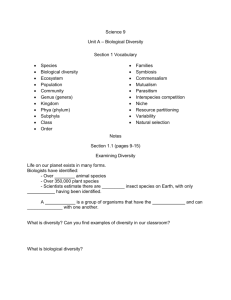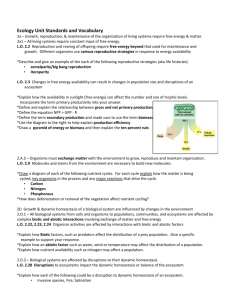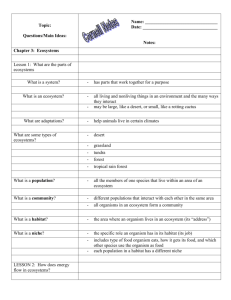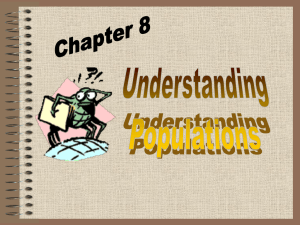Chapter 4 – Ecosystems - Edgewater School District
advertisement
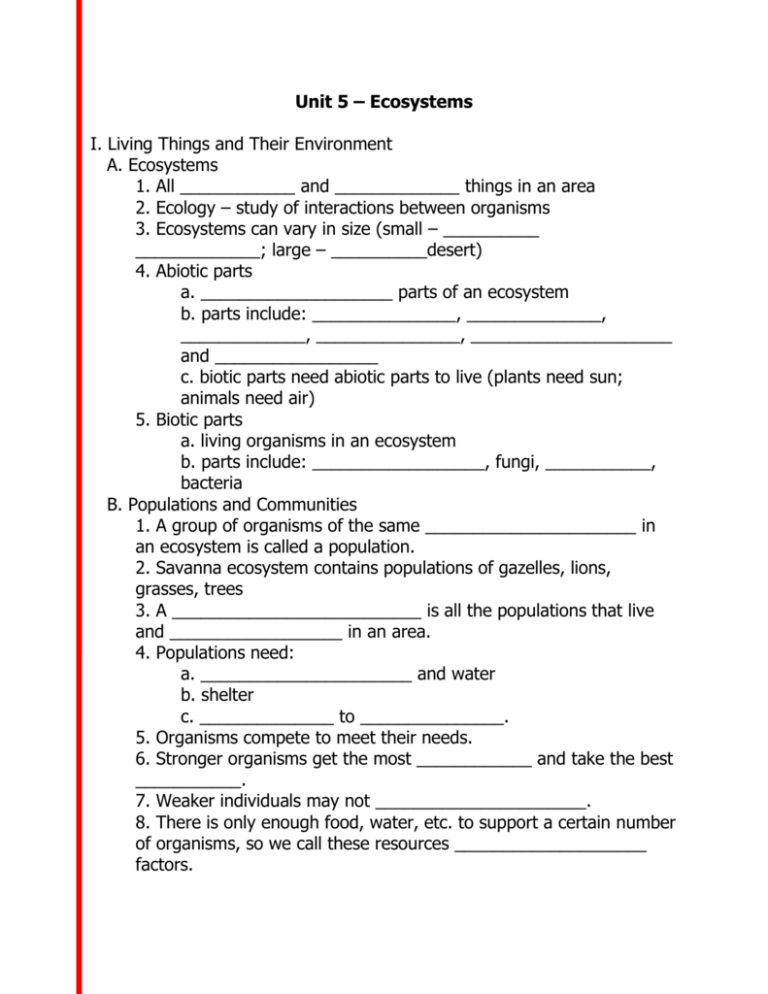
Unit 5 – Ecosystems I. Living Things and Their Environment A. Ecosystems 1. All ____________ and _____________ things in an area 2. Ecology – study of interactions between organisms 3. Ecosystems can vary in size (small – __________ _____________; large – __________desert) 4. Abiotic parts a. ____________________ parts of an ecosystem b. parts include: _______________, ______________, _____________, _______________, _____________________ and _________________ c. biotic parts need abiotic parts to live (plants need sun; animals need air) 5. Biotic parts a. living organisms in an ecosystem b. parts include: __________________, fungi, ___________, bacteria B. Populations and Communities 1. A group of organisms of the same ______________________ in an ecosystem is called a population. 2. Savanna ecosystem contains populations of gazelles, lions, grasses, trees 3. A __________________________ is all the populations that live and __________________ in an area. 4. Populations need: a. ______________________ and water b. shelter c. ______________ to _______________. 5. Organisms compete to meet their needs. 6. Stronger organisms get the most ____________ and take the best ___________. 7. Weaker individuals may not ______________________. 8. There is only enough food, water, etc. to support a certain number of organisms, so we call these resources ____________________ factors. C. Niches 1. An organism’s ________________ is the place where it lives within an ecosystem. 2. Many populations can live in the same ecosystem. 3. An organism’s niche is its _______________, or function, in its ecosystem. 4. An organism’s niche includes: a. how it finds ____________ b. the climate it _____________ in c. what types of food it eats 5. Every ________________ has a niche. 6. Each population has its own niche. No two are exactly the same! D. Diversity 1. Diversity is the variety of different ______________ that live in an ecosystem. 2. Ecosystems close to the _______________ usually have a lot of diversity. 3. Importance of diversity a. Organisms rely on other _____________________. b. Relationships are connected in a large, complex __________ c. More organisms supply more resources. 4. Natural reasons for diversity a. ________________ b. ________________ 5. Humans affect diversity in several ways. a. Can damage ecosystems b. ______________________ can reduce the number of species c. Destruction of forests in order to build _____________



